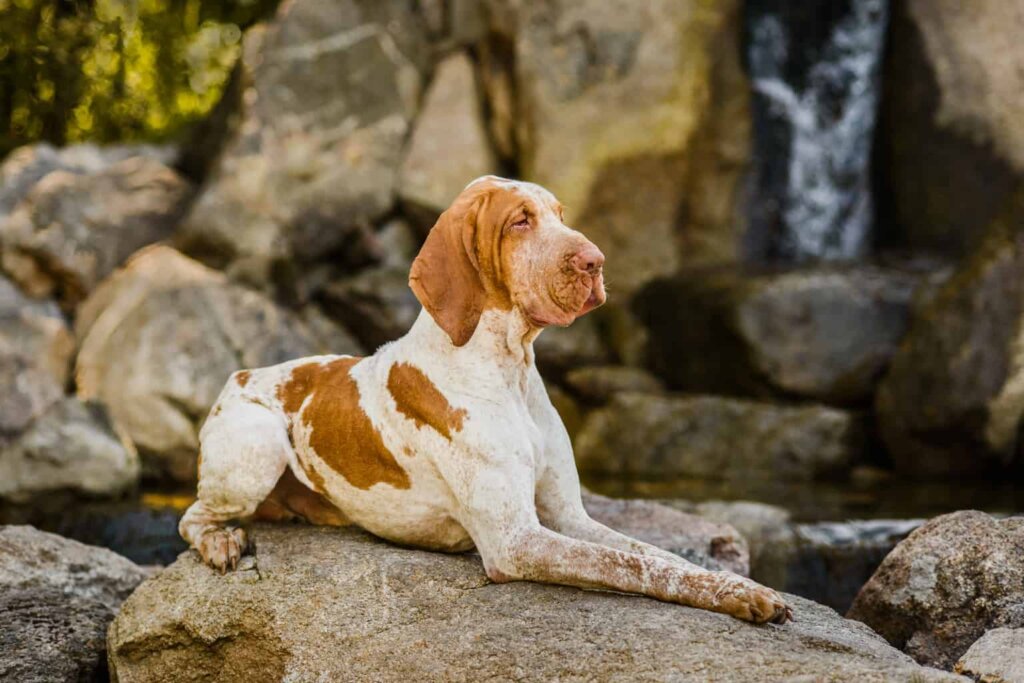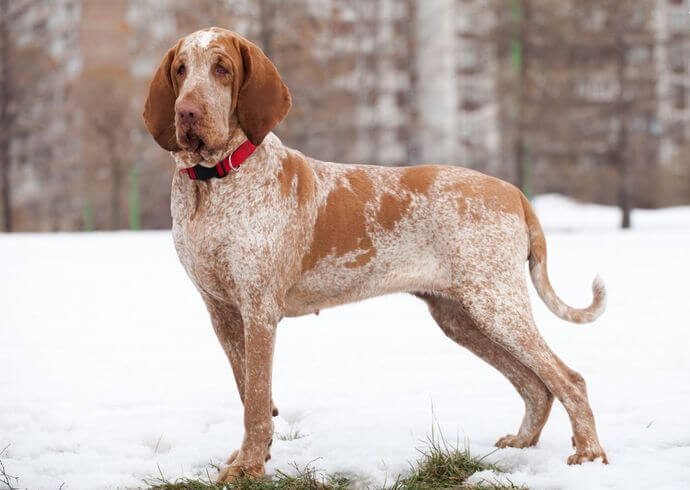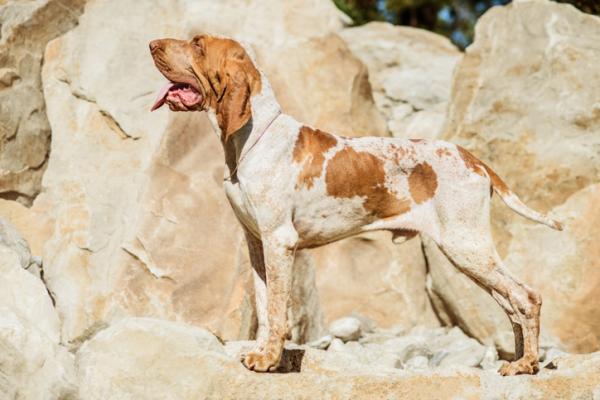The Bracco Italiano: One of the Most Popular Dogs

The Bracco Italiano is a dog native to northern Italy that is, along with the Spinone Italiano, one of the two hunting breeds of that country. Formerly, there were two variants of the breed, but today there’s only one.
Origin of the Bracco Italiano

The Bracco Italiano is a hunting dog with an ancient origin which was initially used for hunting birds. Over time, its hunting behavior was adapted to the current style of hunting.
This dog is known as the oldest hunting dog in Europe, although its original ancestor is unknown. However, it’s accepted that it’s the result of a cross between two breeds, the Italian greyhound and the Central Asian Shepherd Dog.
From the Bracco Italiano, two distinct variants originated: the Piedmont region variant and the Lombardy region variant. The Piedmont variant is white and orange in color, while the Lombardy variant is characterized by a brown and reddish color.
During the Middle Ages, the breed gained a foothold in Italy and spread throughout the Old World thanks to the aristocracy. Its popularity continued to rise until the beginning of the 20th century, when it began to decline.
In the 19th century, the Bracco Italiano was on the verge of extinction due to unsuccessful crossbreeding and sickly offspring. This resulted in dogs that were too heavy for hunting and had various health problems.
Thanks to the care and selection of the dogs that were crossed, the breed was able to recover. However, to avoid problems of genetic diversity, it was decided to unify the two variants of the breed in the 1920s.
By unifying the two breeds into a single breed, they complemented each other, with their faults and virtues. Thus, the Piedmontese dog, accustomed to working in the mountains, had a small build and characteristic temperament that it brought to the breed.
On the other hand, the Lombardy dog had a broader body and was accustomed to trotting through marshy areas. This dog showed great vision and natural hunting ability.
In 1949, the Bracco Italiano Society declared it a standard breed, with the characteristics contributed by both variants. In the past, the breed standard already had other characteristics.
Body proportions
The Bracco Italiano is a vigorous animal, defined by slender limbs, and a sculpted head in which both the skull and muzzle are of equal length. On the other hand, the trunk of the dog has a length equal or slightly superior to the height of the withers.
This breed is characterized by being large, with a height between 56 and 66 cm (22 to 25 inches), as well as a weight of between 25 and 36 kilograms (55 to 60 pounds). The Bracco Italiano is a dog with a slow trot that changes to a gallop when it’s happy or excited.
In addition, it has a short, glossy coat that covers its whole body, except on the ears and head, as well as on the legs, where it’s finer. In relation to its body color, it’s characterized by a white shade, which can be combined with orange or brown.
The personality of the Bracco Italiano

Regarding this dog’s character, it’s characterized by being docile, conscientious, and easy to train. In addition, this breed is usually defined as very intelligent, efficient, and hardy.
Dogs of this breed are very sociable and gentle with children and other pets. This occurs when they’re trained to get used to them from a young age.
This breed loves interacting with humans, whether families or individuals, and whether watching a movie on the couch or taking a walk. Neither do they mind keeping an eye on the yard while it’s being cleaned, alert to any animal that may activate their hunting skills. Overall, the Bracco Italiano is considered to be the oldest hunting dog in Europe.
All cited sources were thoroughly reviewed by our team to ensure their quality, reliability, currency, and validity. The bibliography of this article was considered reliable and of academic or scientific accuracy.
- Trofeo, caza y conservación. (10/02/2020). Braco Italiano. Trofeo, caza y conservación. (https://www.trofeocaza.com/perros-de-caza/braco-italiano/)
- vetStreet. Bracco italiano. VetStreet. (http://www.vetstreet.com/dogs/bracco-italiano#personality)
